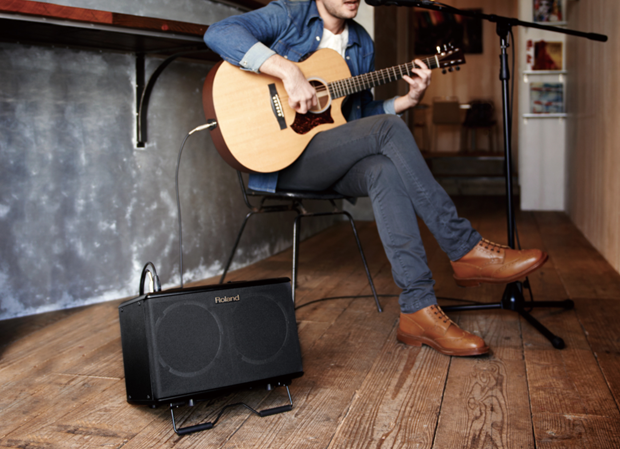Sound Advice: Acoustic Amp Overview

An electric guitar amp at its cleanest still has distortion engineered into it, and you wouldn’t want it any other way. It’s that distortion that fattens the tone, adds a little edge and puts the magic that we call “electric” into the sound. In addition, electric guitar amps add highs to the sound in the form of overtones generated by the electronic circuitry. They are not optimized to capture and reproduce the natural, ringing highs of acoustic guitars. It’s the unnatural way that electric amps handle the characteristic ring that most disappoints acoustic guitarists playing through electric guitar amps.
Of course, this doesn’t stop people from plugging their acoustic guitars into electric guitar amps. And I think the sound of an acoustic plugged into an electric guitar amp, along with some effects, is one of the most exciting areas in acoustic playing right now. Experiment and you’ll find lots of new and pleasing sounds.
However, don’t expect the sound to be “natural.” Sometimes you can come pretty close, and it seems that some guitar/preamp/amp combinations can get closer than others to accomplishing this. But if it’s a really natural sound you want, then you need equipment that is specifically designed to give you just that.
The right equipment generally means either a PA or specially dedicated acoustic guitar amp. PA’s are generally for bands that want to mix several singers and instrumentalists through a single sound system, using a combination of microphones and direct inputs. Owning, transporting and setting up a PA is a big deal, If you’re playing by yourself or with just a couple of friends who have their own amplification equipment, you should probably be checking out acoustic guitar amps. They are smaller, more convenient and generally cheaper than a PA, and are apt to be more useful. Some currently available models have a separate channel for a mike input, so you can even use them to amplify your singing as well.
- There are man brands of acoustic guitar amps on the market today, in a large variety of shapes, sizes and prices. As you evaluate them, bear these points in mind:
- Power matters. It requites more Watts to produce an equivalent volume level of clean sound than it does dirty sound. Acoustic guitar amps are clean and, as a result, need more power. At 25 Watts, an acoustic guitar amp will serve you in an intimate performance space where everyone is listening to you in rapt silence, or get you heard above the drums in a mellow jam. For more than that, you’ll need more power.
•Some dramatically high-tech speaker configurations are available in today’s technologically competitive market, and it’s easy to fall for them. Many of these speaker features deliver on their promises but also add – just as dramatically – to the cost and weight of the product. Use your ears and intuition when deciding what’s best for you.
•Acoustic guitar amps are generally designed to capture the subtlest nuances of the instrument’s sound – including some you may not want, like the squeak of finger slides. Listen carefully to how well the high-frequency knobs or sliders allow you to control fret noise.
•It’s a good idea to look for an amp that has a reverb affect and an anti-feedback (or “notch”) feature built in. Both can also be purchased separately as outboard devices.
Get The Pick Newsletter
All the latest guitar news, interviews, lessons, reviews, deals and more, direct to your inbox!
•Finally: Amps featuring an extra channel, with its own controls, for a microphone and/or and additional instrument can be had, although at increased cost.
There are lots of great acoustic guitar amplifiers currently on the market, and as usual, the best thing you can do for yourself is to go down and try ‘em out.
“You get that Guild sound at an incredibly accessible price”: The 300 Series brings that rich Guild tone, prized by everyone from Stevie Ray Vaughan to Paul Simon and Eric Clapton to a $299 acoustic build
“Each guitar sounded stunningly warm, natural and lush… like putting your ear in front of the guitar’s soundhole, only much louder”: Circa ’74 150-10 Acoustic/Vocal amplifier review









